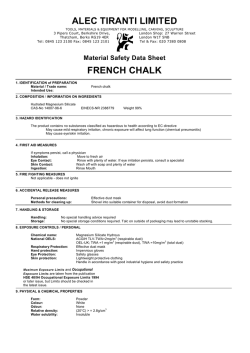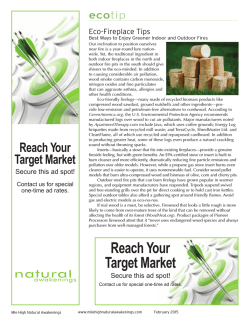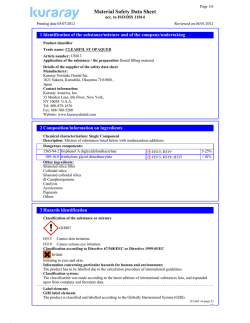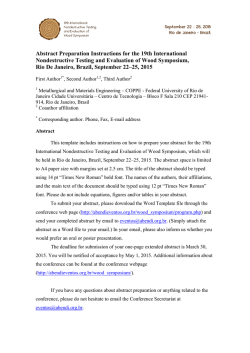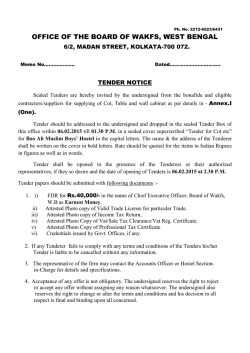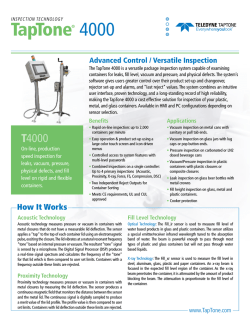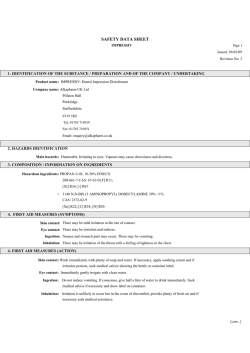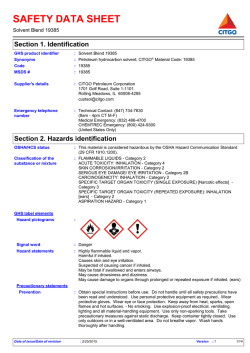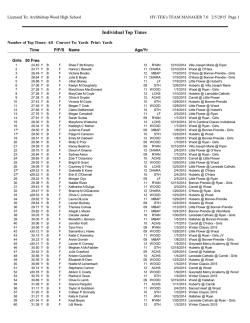
Health and Safety Data
SAFETY DATA SHEET WOOD BLEACH B Page: 1 Compilation date: 29/01/2015 Revision No: 4 Section 1: Identification of the substance/mixture and of the company/undertaking 1.1. Product identifier Product name: WOOD BLEACH B Product code: WBLEB Synonyms: WOOD BLEACH B 1.2. Relevant identified uses of the substance or mixture and uses advised against 1.3. Details of the supplier of the safety data sheet Company name: Rustins Ltd Waterloo Road Cricklewood London NW2 7TX United Kingdom Tel: +44 (0)208 450 4666 Fax: +44 (0)208 452 2008 Email: [email protected] 1.4. Emergency telephone number Section 2: Hazards identification 2.1. Classification of the substance or mixture Classification under CHIP: Xn: R22; Xi: R41; Xi: R37 Classification under CLP: Acute Tox. 4: H302; Skin Corr. 1B: H314; STOT SE 3: H335 Most important adverse effects: Harmful if swallowed. Risk of serious damage to eyes. Irritating to respiratory system. 2.2. Label elements Label elements under CLP: Hazard statements: H302: Harmful if swallowed. H314: Causes severe skin burns and eye damage. H335: May cause respiratory irritation. Signal words: Danger Hazard pictograms: GHS05: Corrosion GHS07: Exclamation mark Precautionary statements: P280: Wear protective gloves/protective clothing/eye protection/face protection. [cont...] SAFETY DATA SHEET WOOD BLEACH B Page: 2 P301+310: IF SWALLOWED: Immediately call a POISON CENTER or doctor. P304+340: IF INHALED: Remove victim to fresh air and keep at rest in a position comfortable for breathing. P305+351+338: IF IN EYES: Rinse cautiously with water for several minutes. Remove contact lenses, if present and easy to do. Continue rinsing. P312: Call a POISON CENTER or doctor if you feel unwell. P321: Specific treatment (see information on this label). Label elements under CHIP: Hazard symbols: Harmful. Risk phrases: R22: Harmful if swallowed. R41: Risk of serious damage to eyes. R37: Irritating to respiratory system. 2.3. Other hazards Other hazards: Corrosive to skin, eyes and mucous membranes. Non-flammable. Decomposition may contribute to the combustion of other flammable materials. Danger of explosion through contamination do NOT return unused/surplus liquid to original container. PBT: This product is not identified as a PBT/vPvB substance. Section 3: Composition/information on ingredients 3.1. Substances Chemical identity: HYDROGEN PEROXIDE Section 4: First aid measures 4.1. Description of first aid measures Skin contact: Remove all contaminated clothes and footwear immediately unless stuck to skin. Drench the affected skin with running water for 10 minutes or longer if substance is still on skin. Consult a doctor. Eye contact: Bathe the eye with running water for 15 minutes. Consult a doctor. Ingestion: Do not induce vomiting. Wash out mouth with water. Consult a doctor. If unconscious, check for breathing and apply artificial respiration if necessary. Inhalation: If unconscious, check for breathing and apply artificial respiration if necessary. Remove casualty from exposure ensuring one's own safety whilst doing so. Move to fresh air in case of accidental inhalation of vapours. 4.2. Most important symptoms and effects, both acute and delayed Skin contact: Progressive ulceration will occur if treatment is not immediate. Irritation or pain may occur at the site of contact. Severe burns may occur. [cont...] SAFETY DATA SHEET WOOD BLEACH B Page: 3 Eye contact: There may be severe pain. Corneal burns may occur. May cause permanent damage. Ingestion: Burns to mouth, throat and gastro-intestinal tract. Evolution of oxygen could cause bloating of stomach, nausea, vomitting and internal injury. Inhalation: There may be irritation of the throat with a feeling of tightness in the chest. 4.3. Indication of any immediate medical attention and special treatment needed Section 5: Fire-fighting measures 5.1. Extinguishing media Extinguishing media: Water spray, fog or mist. Select extinguishing medium appropriate to other materials involved in and/or to the circumstances of the fire. 5.2. Special hazards arising from the substance or mixture Exposure hazards: Non-flammable. Decomposition may evolve oxygen and assist combustion of other flammable materials. Heat causes decomposition resulting in a rapid release of oxygen which may become explosive. Can react violently and explosively when in contact with oxidising agents, organic materials, heavy metals and dust contamination. Toxic and explosive fumes may be generated in a fire. 5.3. Advice for fire-fighters Advice for fire-fighters: Wear full protective clothing. Wear self-contained breathing apparatus. Cool closed containers exposed to fire with water spray. Do NOT allow run-off from fire fighting to enter drains or water courses. Section 6: Accidental release measures 6.1. Personal precautions, protective equipment and emergency procedures Personal precautions: Avoid contact with skin and eyes. Ventilate the area. Eliminate all sources of ignition. No Smoking. Avoid inhaling vapour. Do not attempt to take action without suitable protective clothing (see section 8). Mark out the contaminated area with signs and prevent access to unauthorised personnel. 6.2. Environmental precautions Environmental precautions: Do not discharge into drains or rivers. If the product enters drains or sewers, the local water company should be contacted immediately. In the case of contamination of streams, rivers or lakes contact the relevant environment agency. 6.3. Methods and material for containment and cleaning up Clean-up procedures: Contain and collect spillages with non-combustible absorbent materials, e.g. sand, earth, vermiculite. Transfer into a suitable container for disposal in accordance with the waste regulations (see section 13) DO NOT return to original containers. Small spills may be diluted to drain with large quantities of water. Dilute to less than 1% w/w and put to drain with plenty of water. Wash the site of the spillage with plenty of water and detergent, avoid the use of solvents. [cont...] SAFETY DATA SHEET WOOD BLEACH B Page: 4 6.4. Reference to other sections Section 7: Handling and storage 7.1. Precautions for safe handling Handling requirements: Ensure there is sufficient ventilation of the area. Avoid inhalation of vapour. Avoid skin and eye contact. Smoking, eating and drinking should be prohibited in areas of storage and use. Emergency shower and eye wash facilities should be readily available. Exclude sources of heat, sparks and open flame. Care should be taken when opening containers as pressure may have built up during storage. Avoid contact with combustible, flammable or corrosive products. Implements used for handling the product must be free from contamination. NEVER return material to containers. The Manual Handling Operations Regulations may apply to the handling of containers of this product. 7.2. Conditions for safe storage, including any incompatibilities Storage conditions: Store in cool, dry, well ventilated area. Keep away from direct sunlight. Exclude sources of heat, sparks and open flame. Store on concrete flooring that can be swilled and drained. Take precautionary measures to prevent product spills into drains, the ground or waters. Suitable packaging: Keep in original closed containers fitted with vents. If transfer is necessary use glass or plastic containers, which MUST be clean and free from any contamination. Containers should be vented to prevent build up of pressure. 7.3. Specific end use(s) Section 8: Exposure controls/personal protection 8.1. Control parameters Workplace exposure limits: No data available. DNEL/PNEC Values DNEL / PNEC No data available. 8.2. Exposure controls Engineering measures: Provide adequate ventilation. If these are not sufficient to maintain concentrations of particulates and/or solvent vapours below the relevant occupational exposure limits, suitable respiratory protective equipment should be worn (see Respiratory protection below). Respiratory protection: If there is a risk of exposure to high vapour concentrations, wear self-contained breathing apparatus. All personal protective equipment, including respiratory protective equipment, used to control exposure to hazardous substances must be selected to meet the requirements of the COSHH Regulations. Hand protection: Protective gloves. [cont...] SAFETY DATA SHEET WOOD BLEACH B Page: 5 Eye protection: Safety goggles. Ensure eye bath is to hand. Skin protection: Impervious overalls and boots, preferably of PVC. Section 9: Physical and chemical properties 9.1. Information on basic physical and chemical properties State: Liquid Colour: Clear. Odour: Pungent, characteristic odour. Solubility in water: Miscible in all proportions Boiling point/range°C: 107 Relative density: 1.10 @ 20 C 9.2. Other information Other information: No data available. Section 10: Stability and reactivity 10.1. Reactivity 10.2. Chemical stability Chemical stability: Stable under normal conditions of use with slow gas release. 10.3. Possibility of hazardous reactions 10.4. Conditions to avoid Conditions to avoid: Heat sources, high temperatures and direct sunlight. 10.5. Incompatible materials Materials to avoid: Reacts violently with readily oxidizable organic materials, acids, alkalies, reducing agents and other oxidizers. Catalytically decomposed by heavy metals and their salts, enzymes and contaminants such as dirt and rust. May react vigorously with flammable liquids and gases and other combustible materials. 10.6. Hazardous decomposition products Haz. decomp. products: Heat causes decompositon resulting in a rapid release of oxygen which may become explosive. Contamination by an oxidizable or an organic material presents an explosion hazard. Section 11: Toxicological information 11.1. Information on toxicological effects Relevant hazards for substance: Hazard Route Basis [cont...] SAFETY DATA SHEET WOOD BLEACH B Page: 6 Acute toxicity (ac. tox. 4) ING Based on test data Skin corrosion/irritation DRM Based on test data Serious eye damage/irritation OPT Based on test data STOT-single exposure INH Based on test data Symptoms / routes of exposure Skin contact: Progressive ulceration will occur if treatment is not immediate. Irritation or pain may occur at the site of contact. Severe burns may occur. Eye contact: There may be severe pain. Corneal burns may occur. May cause permanent damage. Ingestion: Burns to mouth, throat and gastro-intestinal tract. Evolution of oxygen could cause bloating of stomach, nausea, vomitting and internal injury. Inhalation: There may be irritation of the throat with a feeling of tightness in the chest. Section 12: Ecological information 12.1. Toxicity Ecotoxicity values: No data available. 12.2. Persistence and degradability Persistence and degradability: Readily biodegradable, but will inhibit action of boilogical treatment plant. Decomposes to water and oxygen. 12.3. Bioaccumulative potential Bioaccumulative potential: Not expected to bioaccumulate. 12.4. Mobility in soil Mobility: Soluble in water. The product should not be allowed to enter drains or water courses or be deposited where it can affect ground or surface waters. 12.5. Results of PBT and vPvB assessment PBT identification: This product is not identified as a PBT/vPvB substance. 12.6. Other adverse effects Other adverse effects: Slightly toxic to aquatic species. Section 13: Disposal considerations 13.1. Waste treatment methods NB: The user's attention is drawn to the possible existence of regional or national regulations regarding disposal. Section 14: Transport information 14.1. UN number UN number: UN2014 [cont...] SAFETY DATA SHEET WOOD BLEACH B Page: 7 14.2. UN proper shipping name Shipping name: HYDROGEN PEROXIDE, AQUEOUS SOLUTION 14.3. Transport hazard class(es) Transport class: 5.1 (8) 14.4. Packing group Packing group: II 14.5. Environmental hazards Environmentally hazardous: No Marine pollutant: No 14.6. Special precautions for user Tunnel code: E Transport category: 2 Section 15: Regulatory information 15.1. Safety, health and environmental regulations/legislation specific for the substance or mixture 15.2. Chemical Safety Assessment Chemical safety assessment: Saftey Data Sheet complies with UK regulatory references in accordance with CHIP 3.1. Section 16: Other information Other information Other information: This product is supplied as part B of a two part Wood Bleach. Danger of explosion through contamination do NOT return unused/surplus liquid to original container. Phrases used in s.2 and s.3: H302: Harmful if swallowed. H314: Causes severe skin burns and eye damage. H335: May cause respiratory irritation. R22: Harmful if swallowed. R37: Irritating to respiratory system. R41: Risk of serious damage to eyes. Legend to abbreviations: PNEC = predicted no effect level DNEL = derived no effect level LD50 = median lethal dose LC50 = median lethal concentration EC50 = median effective concentration IC50 = median inhibitory concentration dw = dry weight bw = body weight cc = closed cup [cont...] SAFETY DATA SHEET WOOD BLEACH B Page: 8 oc = open cup MUS = mouse GPG = guinea pig RBT = rabbit HAM = hamster HMN = human MAM = mammal PGN = pigeon IVN = intravenous SCU = subcutaneous SKN = skin DRM = dermal OCC = ocular/corneal PCP = phycico-chemical properties Legal disclaimer: The above information is believed to be correct but does not purport to be all inclusive and shall be used only as a guide. This company shall not be held liable for any damage resulting from handling or from contact with the above product. As the specific conditions of use of the product are outside the supplier's control, the user is responsible for ensuring that the requirements of relevant legislation are complied with. [final page]
© Copyright 2024
